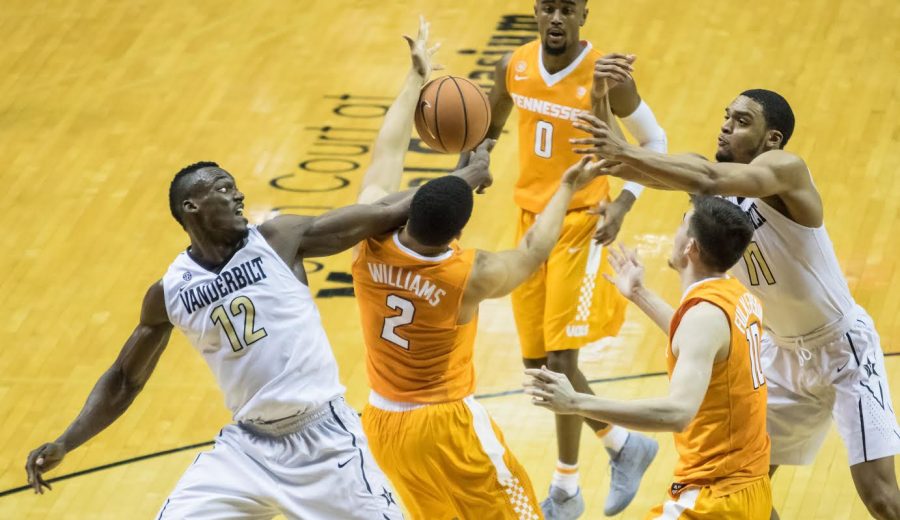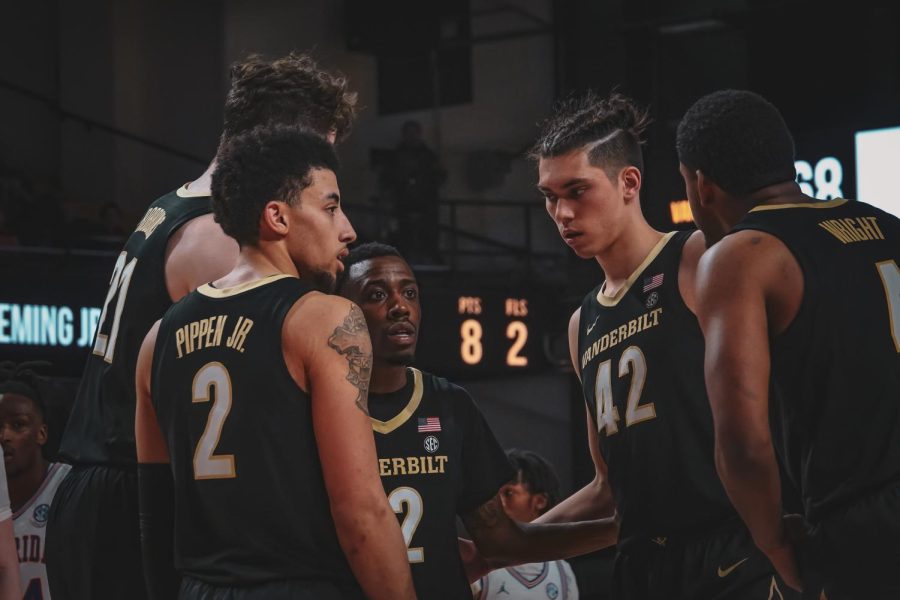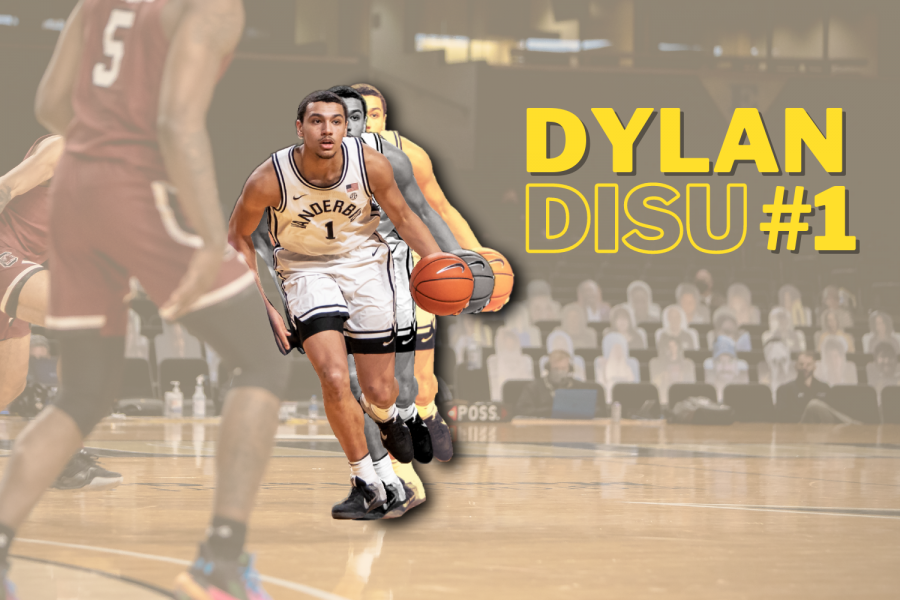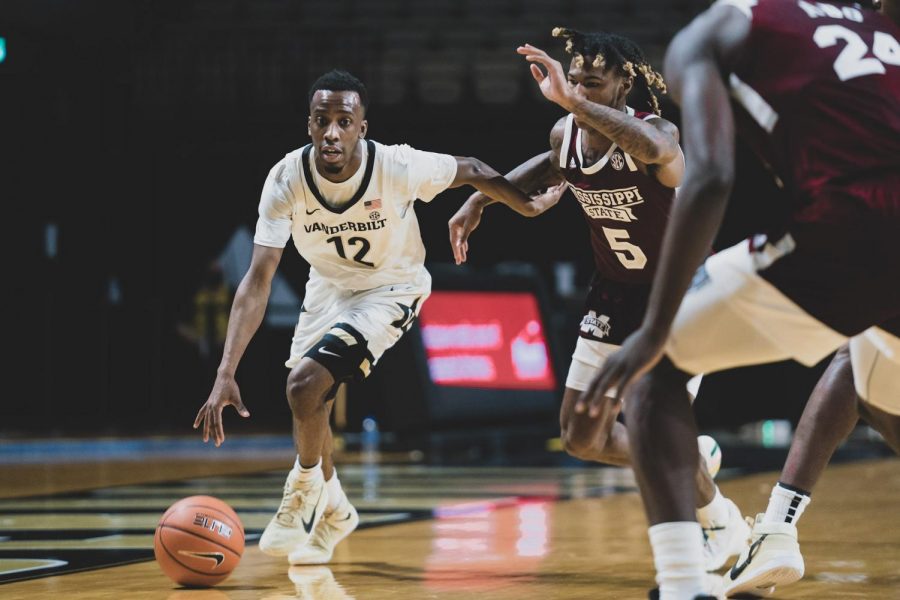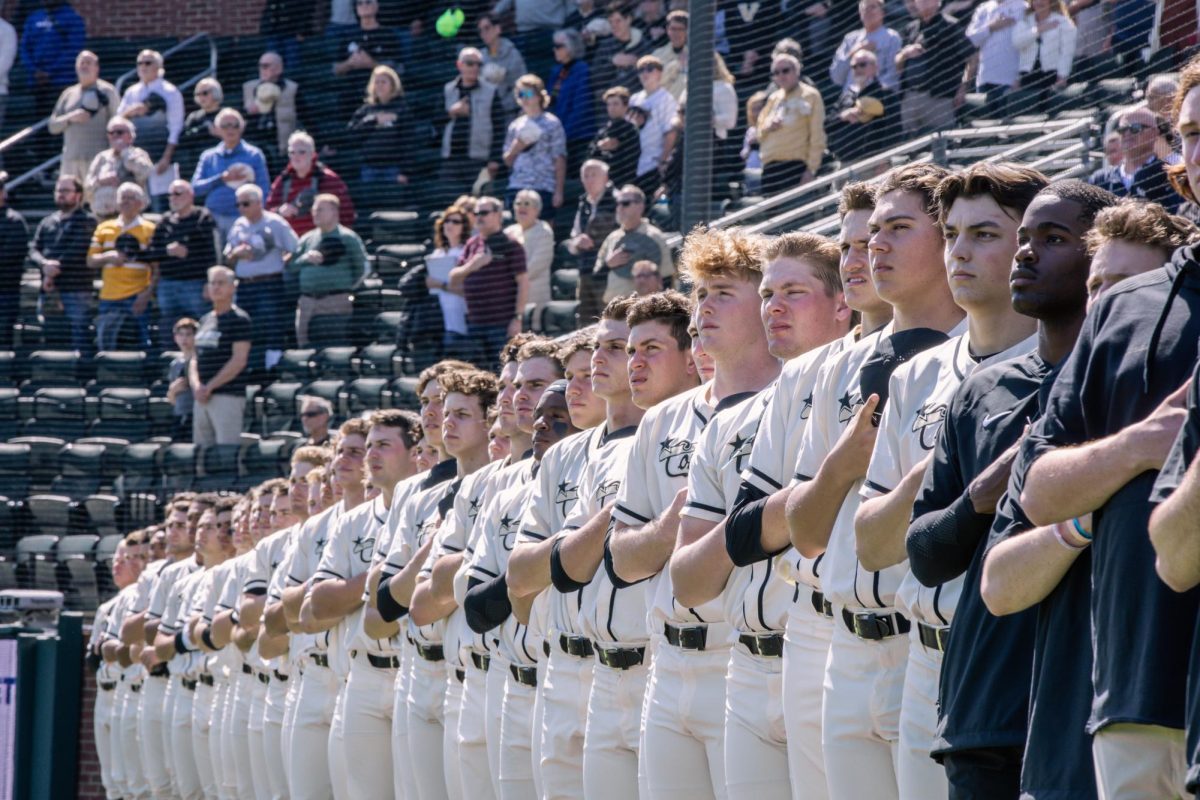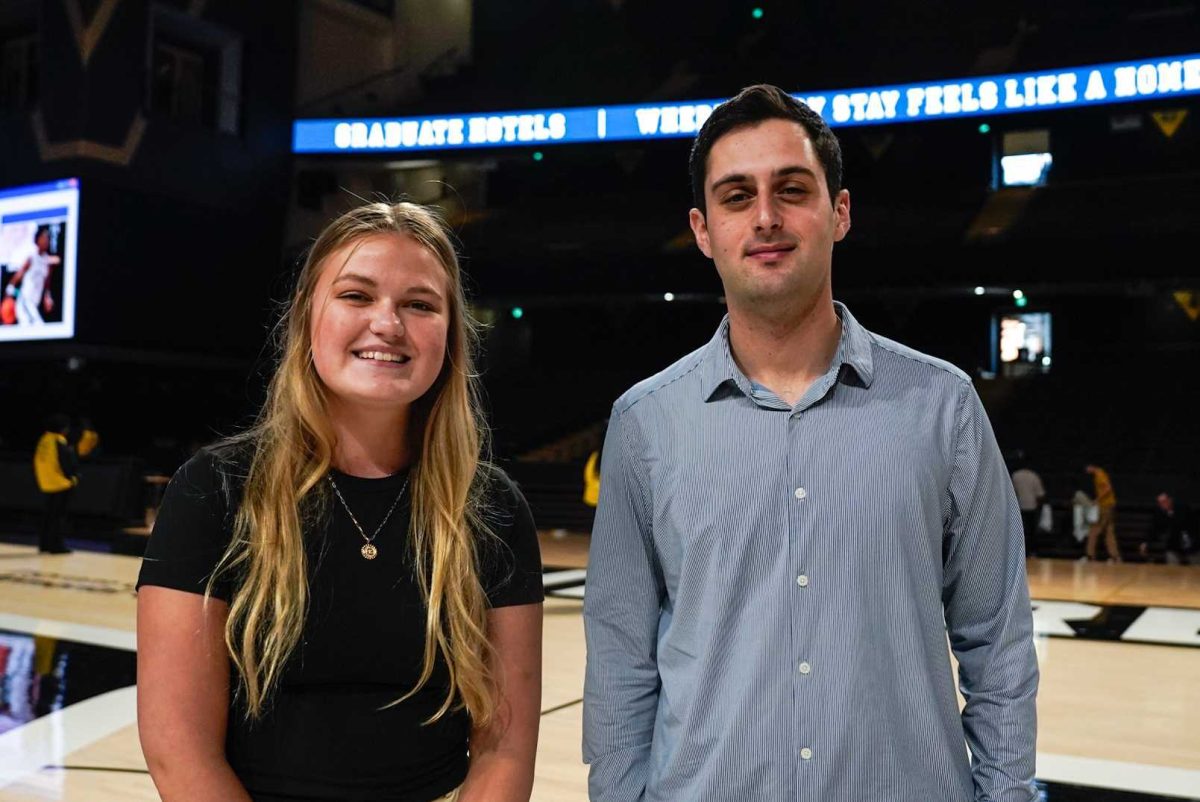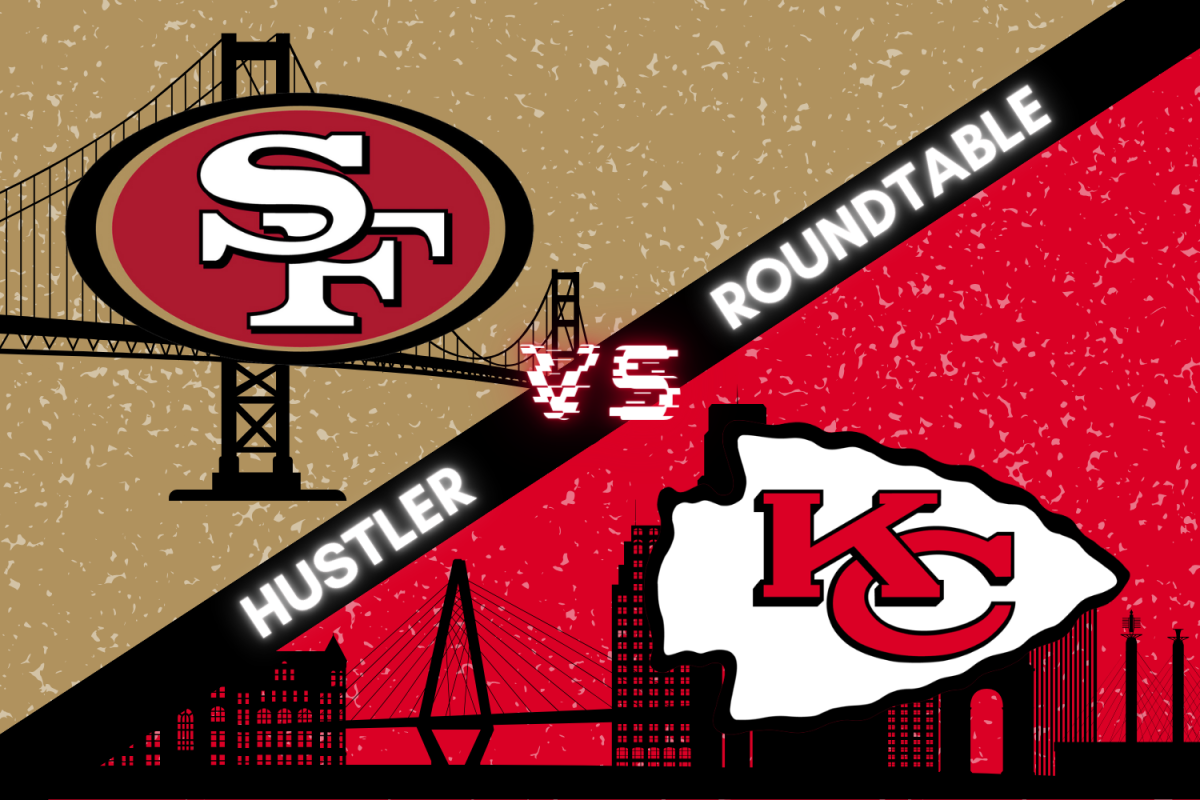When the ball left Riley LaChance’s hands in the closing seconds of the first half of Tuesday night’s game against Tennessee, three sounds ensued.
The first was the screaming sound of the buzzer ringing throughout the arena. The second was the swishing sound of the ball delicately descending through the net. The third was the sound of the Vanderbilt contingent, as loud as it has been all year, yelling and cheering in unison. The sense of “Memorial Magic” that had somehow eluded this team since a victory over Kentucky two years ago seemed to be back, and Vanderbilt was feeding off of it in the first half.
And just as quickly as it was there, it was gone. What looked to be a team playing its most perfect brand of basketball, to the tune of 45 first half points, looked like a shell of itself in the second period. The parading sound of the crowd became silent, and the Commodores watched the Volunteers drop 57 second-half points to earn a 92-84 victory.
The look on the faces of Saban Lee and Jeff Roberson in the postgame presser said it all. They didn’t tell the story of a team experiencing a second-half collapse for the first time. They told the story of a team that was sick and tired of not being able to get the job done during crunch time.
It’s hard to blame them. Lee looked like Kyrie Irving in the second half with the way he was able to get to the basket at will. Unfortunately, he looked like pre-LeBron Kyrie Irving, trying to pull the rest of the team behind him, fighting to earn a victory that was slowly slipping away. Roberson, for his part, knows that role all too well.
The dilemma for Bryce Drew and his team is a serious one, and it’s not a newfound one either. For the past calendar year, the Commodores have struggled mightily down the stretch in games, constantly giving up leads at alarming rates.
The first glimpse of this came on January 24th, 2017, in a home matchup versus Arkansas. The Commodores were on the verge of reaching .500 for the first time in conference play, up by 15 with just six minutes to go. With four minutes to go, the now ten-point lead still seemed sufficient, and with just 50 seconds to play, a six-point margin seemed just good enough. Suffice it to say, none of those leads held, and the Commodore faithful watched Arkansas steal a crucial game in Memorial Gym.
The weeks that followed were largely positive for Vanderbilt, telling the story of a team slowly inching its way toward a tournament bid. The setbacks, though, while not disastrous in the grand scheme of things, continued the narrative from the Arkansas debacle. Vanderbilt watched a close first-half game turn into a blowout at the hands of Missouri, a six-point halftime lead flip to a six-point defeat against Kentucky, and a neck-and-neck rematch against Arkansas in the SEC Tournament turn into a rout that that at one point reached a 27-point deficit. That was all topped off with questionable decision-making in the final seconds against Northwestern in the NCAA tournament.
For Vanderbilt fans, however, none of that mattered much. The ends seemed to justify the means. A tournament berth in Bryce Drew’s first year was an improvement over the previous season’s campaign, and with a successful season like that, it didn’t matter how they got there. Sure, there were a few bumps in the road, but there was hope for the future.
Now, however, the near future has arrived, and those late game demons are still rearing their heads. This time, Vanderbilt doesn’t have a winning record, or a prospective tournament bid to fall back on. A 6-10 record halfway through the year has the Commodores on the outside looking in, not just for the NCAA Tournament, but for any postseason berth at all.
The Commodores have had their chances all year. In the team’s first real test against USC at home, Vanderbilt was able to handle the tenth ranked Trojans all game, jumping out to an early lead in the first half and holding on until the final moments. Poor defensive play on the block, however, allowed USC to continue to score in the paint, and Trojans’ forward Chimezie Metu dominated overtime to get the win.
The next out-of-conference home test came against Kansas State, and once again, the Commodores found themselves in the heat of a close game in the final minutes. Again, though, Vanderbilt struggled to defend in the paint, giving the Wildcats easy points in the form of layups and free throws. Kansas State scored on every possession in the final four minutes to close it out. Middle Tennessee State had no trouble replicating these past two low-post performances down the stretch in its road win against the Commodores.
A one-point deficit at halftime turned into a double-digit loss to Arizona State, as did a one-point lead against Seton Hall and a two-point halftime lead against South Carolina. Even in a win over Alabama, Vanderbilt watched a nine-point lead with a minute and a half to play shrink to just one by the time the final buzzer sounded. Tuesday night’s loss to Tennessee was just the latest chapter in a string of sloppy endings.
With the season outlook flipped, do the ends still justify the means? A lot of people already believe they do, viewing this Vanderbilt unit as incapable of competing in the SEC, existing only to boost the conference GPA. The truth, however, is that Vanderbilt is right there. Drew’s team has shown for the bulk of many games, often times for 35 minutes or more, that it can hang with whoever is across the court. LaChance, Roberson, and Matthew Fisher-Davis have made a career proving that they can win in this program. Lee is already looking like a star as well. The personnel have the potential, but the execution isn’t there.
The common thread in all these late game losses is not hard to spot. Grant Williams might as well have circled it with a yellow highlighter when he put up 37 points, 20 of them coming in the second half. All of his second half field goals came in the paint, and all five of them came from within three feet of the basket.
Williams also shot 13/15 from the line, with 10 of those 13 coming in the second half. Frankly, he was getting every shot he wanted. He was spinning baseline for layups, getting Vanderbilt’s bigs to jump on ball fakes, and simply turning and dropping the ball in the basket. When he couldn’t convert, he would go to the line for two more points. It was the same failure to defend in the post that had plagued Vanderbilt throughout the late game struggles of the past year.
On that January 24th day, the Razorbacks’ comeback was largely due to the 16 free throws they shot over those final six minutes. They made 15 of them.
The bottom line is that late in games, teams are going to try their hardest to get high-percentage looks, and for most teams, those looks are going to come from the paint or from the free throw line. That’s the point where the defense is supposed to tighten the screws, to contest shots, to force lower-percentage looks, and to avoid giving up free points from the line. Vanderbilt has failed to tighten the screws over and over again. Just ask Williams, Metu, Nick King, Desi Rodriguez, and numerous other bigs who have tortured the Commodores this season.
On Tuesday night, Rick Barnes knew that his job in the second half was to pound the ball in the paint and to defend the perimeter. With the absence of a potent low-post defense on Vanderbilt’s end, he made this job look pretty easy, which is ultimately why his team won the game. It’s why Vanderbilt hasn’t been able to prevail in the second half of games for a while now. The Commodores aren’t adjusting to stopping easy buckets in the second half, and particularly late in games.
After a loss to Seton Hall earlier this season, NCAA’s Andy Katz asked Bryce Drew how far away his team is from a breakthrough win. Drew answered by saying he thinks his team is right there. He’s right. His team is very close.
But close only counts in horseshoes and hand grenades.
And for Vanderbilt, the time is ticking.

